Wattage on home depot/lowes/wal mart 4 foot lighting fixture?
#1
 Guest_Joshaeus_*
Guest_Joshaeus_*
Posted 14 February 2014 - 11:18 AM
#2
 Guest_Erica Lyons_*
Guest_Erica Lyons_*
Posted 14 February 2014 - 11:25 AM
Watts is a way to measure the amount of energy the light sucks from the wall.
Lumens is a way to measure the amount of light the bulb produces.
LED, incandescent, fluorescent, metal halide, etc all produce different lumens per watt. And even within the category, bulbs aren't equally efficient. At around 100 lumens per watt of light, the Daylight Deluxe fluorescent bulbs I use are very efficient compared to incandescent light bulbs (which are what pet stores tried to sell me to grow plants, and it didn't work so I went to Home Depot to get something to make more light).
Here's a picture of Home Depot's Lithonia 4 foot shop light:
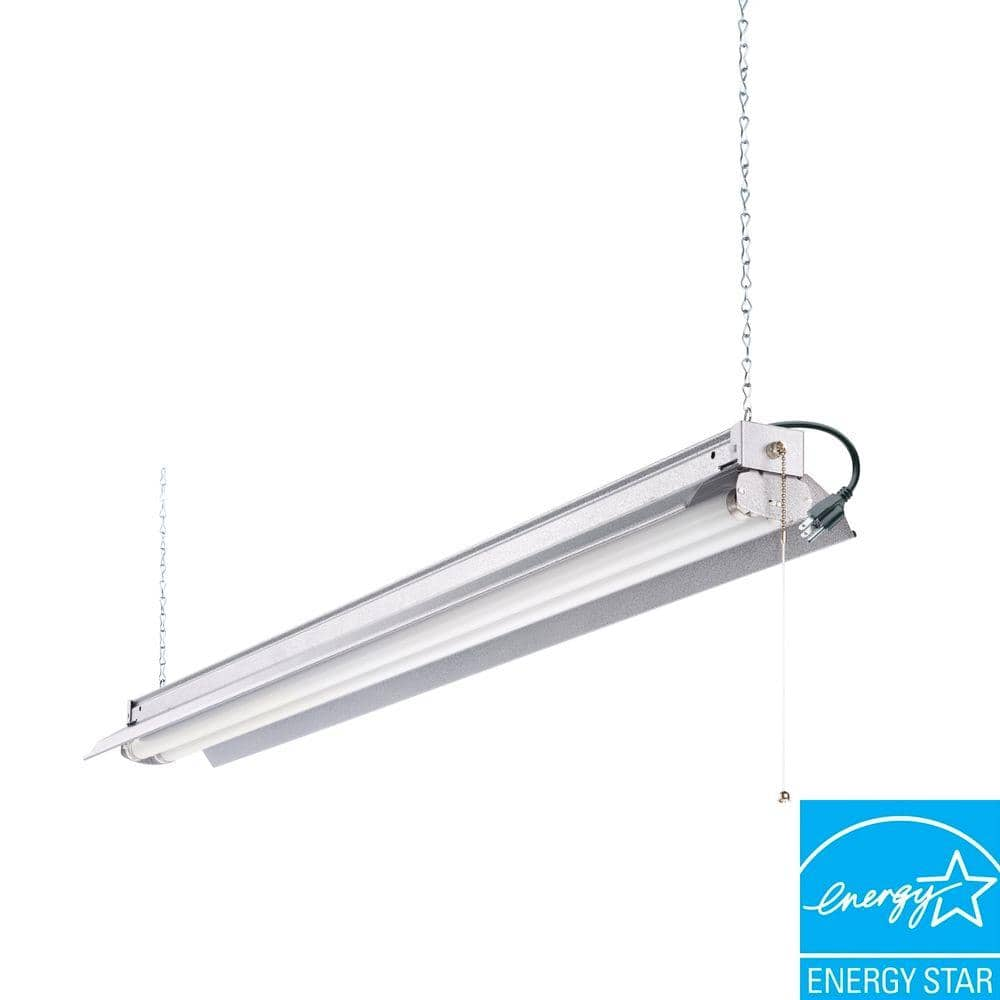
http://www.homedepot...ZG-RE/202052422
That's a link to Home Depot's stainless steel model, which is $20. Walmart sells the same thing but in a white paint covered metal for $10. They also carry it in stainless steel for $15. All three models are on my fish tanks. I don't know why but I think the light from the Home Depot version is slightly brighter. I don't own any tools to measure light brightness, but my eyes are giving the opinion that that's true.
I use 2750 lumen full spectrum Daylight Deluxe in my fixtures. They're $10 for 2 at Home Depot or <$40 for 10.
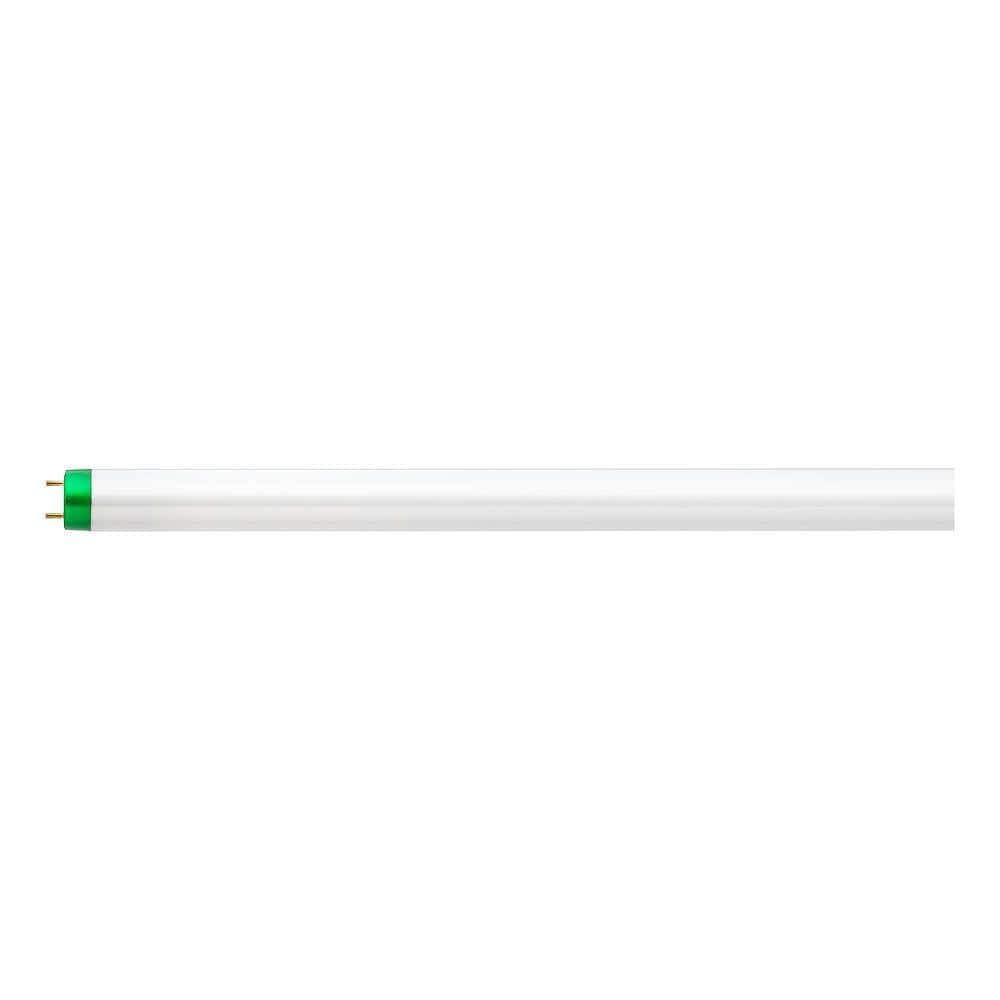
http://www.homedepot...22949/203466585 Actual Color Temperature (K) 6500 Approximate Lightbulb Length 48 Assembled Depth (in.) 49.38 in Assembled Height (in.) 2.7 in Assembled Width (in.) 6.44 in Average Life (hours) 30000 Bulb Diameter (In.) 1.0 Bulb Type Household Color Rendering Index 82.0 Commercial / Residential Commercial / Residential Commercial / Residential Commercial / Residential ENERGY STAR Certified No Indoor/Outdoor Indoor Light Bulb Base Code Bi-Pin Light Bulb Features No additional features Light Bulb Shape Code T8 Light Color Daylight Deluxe Light Output (lumens) 2750 Manufacturer Warranty Yes, 8 Years. See "More Information tab" for details. Number in Package 10.0 Product Length (in.) 48 Returnable 90-Day Specialty Bulb Type Household / General Purpose Start-Up Type Rapid Watt Equivalence 0 Wattage (watts) 32
Here is a link to bulb covers if you want to make any of the bulbs blue. Making 1 or 2 out of 4 bulbs over a tank blue changes the K value of the overall light to more like 10,000, away from 5,000. This is important for a lot of people who want a bluer looking aquariums. Blue fluorescent T8 bulbs ('actinic') are like $40 each right now, so it's cheaper to direct people to bulb covers.

http://www.lightbulb...8AXA#googlebase
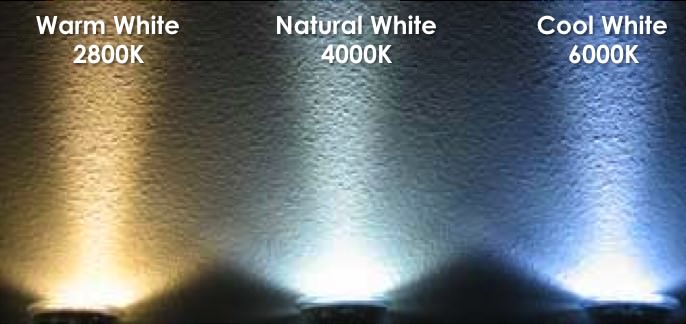
http://thelightingpr...lor-temperature
I find that 100 to 200 lumens per gallon of full spectrum light (where blue spectra is approximately equal to green and red) for 3 hours before I go to work and 5 hours after I get home grows plants well. My friend who grows dwarf hairgrass with CO2 uses 270 lumens per gallon. I grow like 9/10 plant species well with 150 lumens per gallon. 100 lumens per gallon works great for lower light plants. One of my tanks has 200 lumens per gallon because surface plants block out the light. My friend runs a coral frag growth tank at 800 lumens per gallon, but a lot of that's blue, where the 'lumens' unit breaks down. Lumens measures basically only green colored light, so talking about lumens with the caveat that you're talking about full spectrum bulbs where green is approximately equal to red, yellow, and blue works all right. And it opens you up to a whole world of hardware store lights, which all seem to be measured in lumens. PAR would be more appropriate for fish tanks (it stand for photosynthetically active radiation) but nobody puts PAR on their box. Also, I have discussed how plants use a surprising range of the light spectrum for food even though chlorophyll only absorbs blue and red because it turns out plants use other light absorbing molecules in their deep tissue to make sure they eat that green light, too.
You can read more at "Green Light Drives Leaf Photosynthesis More Efficiently than Red Light in Strong White Light: Revisiting the Enigmatic Question of Why Leaves are Green. Ichiro Terashima, Takashi Fujita, Takeshi Inoue, Wah Soon Chow and Riichi Oguchi. Corresponding author: E-mail, itera@biol.s.u-tokyo.ac.jp; Fax, +81-3-5841-4465"
Here's an example plant light absorption spectrum. Some plants I've seen have been basically flat across blue, green, and red. This particular plant below is anacharis, one of our present (invasive) aquatic plants.

http://mvoicu.hubpag..._photosynthesis
Anacharis: http://plants.usda.g...ile?symbol=EGDE
Here are pictures of the Daylight Deluxe bulbs' spectrum from two different sources.

http://www.aquaticpl...sythesis-4.html

http://www.waynesthi...luorescent.html
Basically they're fairly equal across all the colors, with a spike in blue right where plants photosynthesize well. I use 100 to 200 lumens per gallon of that spectrum to grow plants well.
#3
 Guest_Joshaeus_*
Guest_Joshaeus_*
Posted 14 February 2014 - 04:24 PM
Edited by Joshaeus, 14 February 2014 - 04:25 PM.
#4

Posted 14 February 2014 - 08:38 PM
As far as "what is enough?" you will get different answers to that one... I had a single unit like that on a 55, and grew plants and had happy fish... now, maybe my plants were the most special, but I still had plenty of greenery and happy fish... so I would say one unit (two bulbs) was plenty for me. But really if you want to save power consumption, check out my thread on DIY LEDs.
http://forum.nanfa.o...ct/#entry111786
#5
 Guest_MichiJim_*
Guest_MichiJim_*
Posted 15 February 2014 - 11:02 AM
#6
 Guest_Erica Lyons_*
Guest_Erica Lyons_*
Posted 15 February 2014 - 12:38 PM
#7
 Guest_Subrosa_*
Guest_Subrosa_*
#8
 Guest_Erica Lyons_*
Guest_Erica Lyons_*
Posted 15 February 2014 - 02:13 PM
That is a link to a new technology that doesn't seem to be available for purchase yet. Also it's 3,000 K, which is orange, not white light:
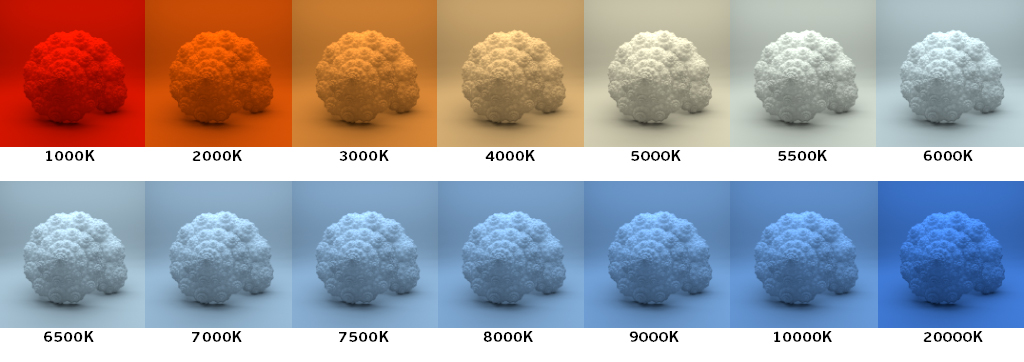
http://facweb.cs.dep...temperature.htm
Anybody with an LED fixture built, how many lumens per watt are the LEDs you use? Michael, how many lumens per watt are the LEDs that you have in your fixture?
#9
 Guest_Subrosa_*
Guest_Subrosa_*
Posted 15 February 2014 - 02:43 PM
#10

Posted 15 February 2014 - 02:44 PM
These are the labeled numbers as I originally reported in the DIY thread linked above:
- Marineland 36-48” 114.99 on Dr. F&S website has 16 white and 8 blue LEDs claims to be 1200 lumens and runs at 24 watts (I am using this on my 75 gallon tank currently).
- Fluorescent shoplight with two T12 bulbs 2600 lumens each(?) and draws a total of 80 watts
- DIY unit is 48” shoplight with 560 cool white LEDs. Labeled at 2.9 watts/ft so approx. 44.5 watts. Labeled at 144 lumens per foot so approx. 2200 lumens. Price $25 power supply plus $25 LEDs is $50 (plus some time, solder, and the useless shoplight carcass).
#11
 Guest_Erica Lyons_*
Guest_Erica Lyons_*
Posted 15 February 2014 - 04:18 PM
.....................1200 lumens / 24 watts = 50 lumens per watt
* DIY unit is 48” shoplight with 560 cool white LEDs. Labeled at 2.9 watts/ft so approx. 44.5 watts. Labeled at 144 lumens per foot so approx. 2200 lumens.
.....................2200 lumens / 44.5 watts = 52 lumens per watt
* Daylight Deluxe T8 bulbs make 2750 lumens per 32 watts. I run four bulbs on my 4 ft long tanks to get 11,000 lumens from 128 watts total (4 bulbs at 32 watts each)
.....................2750 lumens / 32 watts = 85 lumens per watt
MichiJim said, "Energy consumption is something we should be aware of and looking to reduce any way we can. " MichiJim, please look at the lumens per watt. Based on these numbers (50 and 52 lumens per watt for LED, 85 lumens per watt for Daylight Deluxe T8 fluorescent bulbs), Daylight Deluxe bulbs should be included as an upstanding member on the list of energy efficient bulbs.
#12

Posted 15 February 2014 - 09:38 PM
#13
 Guest_Erica Lyons_*
Guest_Erica Lyons_*
Posted 15 February 2014 - 11:50 PM
My first hand experience says that the LEDs are putting more light into the tank. Seeing is believing.
Human eyeballs are terrible spectrometers because they don't see all wavelengths of light equally. They definitely don't see wavelengths of light like plants do. Why trust the human eye to determine how well a light will grow plants?
Look at the image below. If one bulb has more light around 600 nanometers than another, it will look 'brighter' to our eyes. But check out the plant's photosynthetic response: light in the 600 range is actually not all that edible to plants. So the brighter-looking bulb in that situation would not benefit the plants much. A non-full-spectrum bulb that had only 600 and very little of the other wavelengths has the potential to starve the plant. We can't see the part they eat. That's why it's necessary to judge lights based on their measured spectral output, not on how bright a light 'looks' to human eyes.

http://sdhydroponics...-light-spectrum
Measuring pure blue actinic bulbs with lumens breaks down and doesn't work because lumens measures what's near 600. The lumens unit doesn't really increase when blue increases, so a bulb with TONS of blue light energy (which can reach the point it's burning the plants, there's so much of it) might still have a low lumen rating. My method is not foolproof; it only works with full spectrum bulbs where light's fairly uniformly equal in all the colors. Sometimes the only way to measure 400 (which plants love to eat) is to know how much 400 there is in relation to 600, when 600 is what's measured in lumens.
I work with the number of lumens printed on the bulb's box and the graph of its measured spectral output, and I see no problem with that. Are they lying about the amount of lumens their bulbs produce? Maybe someone will find them and bring them to justice. But as a consumer, that's nothing I can do about inaccuracies on the box. I work with what I have.
The Daylight Deluxe bulb's spectrum has roundabouts the same-ish 600 nm region (which is the part the unit 'lumens' measures) as it does blue. I know because someone measure the spectrum for me, see below:
Daylight Deluxe spectrum:

http://www.waynesthi...luorescent.html
So I say 100 to 200 lumens of 'full spectrum' light because I use that amount of Daylight Deluxe light in my tanks. And I have applied this 100-200 lumens per gallon rule of thumb to use multiple other types of bulbs as well. I have a compact fluorescent bulb in a clamp light over my bucket tank, and an under-cabinet full spectrum bulb over my 10 gallon. It turns out lumens is a practical unit for everyday use. In general, I have found that for full spectrum bulbs, 100 to 200 lumens per gallon for 3 hours before work and 5 hours when you get home will grow plants fine.
My friend runs 270 lumens per gallon with CO2 and grows some tricky non-aquatic plants well. He even uses a fourth different type of bulb, yet our lumens per gallon unit seems to be communicating adequately across bulb types. As long as the bulb is full spectrum and fairly even across the visible wavelengths, lumens per gallon seems to work. *shrugs* I am a practical person. If I can light my 75 gallon tank for $50 and grow every plant species I put in it, why not? So I do. I have two 75 gallon tanks, a 55, a 10 gallon, and a bucket tank. The three four foot long tanks have two of the 32 watt shop lights each. The 10 gallon tank has a 13 watt undercabinet light fixture on it with some sort of full spectrum fluorescent tube bulb. The bucket tank has an $8 clamp light with a compact fluorescent spiral bulb. All of the lights are on timers, and I adjust them based on how much light they need. I think they're all on for about 10 hours a day at the moment. No algae. Just lush, happy plants.
Edit:
The one problem I have is when people try to sell lights in pet stores and have no idea that 100 lumens per gallon is aroundabouts the baseline for plant growth. Grr. It really annoys me. I have a friend who has not had luck growing plants. She messaged me and we were chatting about her light. It produces less than one sixth of what I consider my minimum, something like 24 lumens per gallon. How can you expect to grow plants on 24 lumens per gallon? It's infuriating that people have the gall to charge large amounts of money for 'aquarium lights' that absolutely fail to grow plants. I remember back in the day I paid $70 (and that was when I had a $300 / year spending budget; this was a lot of money to me) on 'plant lights' with 'aquarium plant grow bulbs' and everything withered and died. What terrible people. I ended up going to Home Depot and bought their Lithonia 4 foot shop light for $20 and haven't looked back since. What a nice sweet helpful old guy that day in Home Depot. I was like, "You rest it right on your tank?" and he was like, "I do at home, yeah". Such a nice man. I can't ever bring the dead plants that I killed back to life, but I can tell other people what worked for me and how to prevent the death of their own plants. 100 to 200 lumens per gallon. 3 hours before work, 5 when you get home. Buy a timer and fiddle with your hours of light per day. But yeah, whatever works. As long as the plants grow. It's not propaganda. I'm not particularly attached to these Daylight Deluxe bulbs because I'm like, paid by the company or something (Hey company, want to pay me? *wink wink* You totally could) but because they worked for me at a time when I couldn't afford more. And now that years have gone by and I could potentially afford more, I value them for their continued hard work. None of these fixtures have faltered, and it's been more than five years. The $100 Odyssea T5HO fixtures I bought? Broke. Both of them. Stupid things. These Lithonia fixtures have grown plants well for years, so that's why I endorse them.
#14
 Guest_rickwrench_*
Guest_rickwrench_*
Posted 16 February 2014 - 02:05 AM
For the DIY'ers, Cree LEDs are available that output 200lm per watt. Cruise through Mouser or any big electronic supply house.
Automotive fads have driven the market for LED tape strips at 12v, and very high output LEDS. While not "cheap", they aren't that expensive. $150 gets you 10 LEDs rated at 900lm @ 5000K each. 9000 lumens total.
9V LEDs rated at 520lm per 400mw are what I would use (only $3.50 ea.). Us old musicians have boxes of orphaned 9v wall warts. Most of mine are 800mw - 3w. Just right for a tiny tank.
I use cheap 11w spiral cfls (rated at 550 lumens) in original Metaframe hoods for my nanos (2-3 gallons). Probably 75% the emitted light is lost in reflection and restrike. And the bulbs only last about 6 months before they start to fade. I would have called these tanks "medium/low light" based on plant growth results even at 5.5 wpg or 275 lumens per gallon. When I checked at the substrate level directly in the center of the tank with a PAR meter it read only 45 umols. At the corners it was uneven but around 35 umols.
How much of the 550 lumen rated CFL light energy actually reaches the bottom of these 12" deep tanks vs 520 lumen rated single LED? I'll let everyone know if I ever build an LED fixture and compare.
Using lumens as a reference point in a tank environment is similar to using watts-per-gallon. So many factors affect the actual light output of a fixture: the shape of the light source (linear, round, blob, point), restrike from reflectors, reflector quality and shape, distance above the tank, glass cover or not, depth of the tank, reflectivity of the inner glass vs plexi, etc.
As a measurement between like vs like, all other factors being identical, say between brands of T5 bulbs, lumen ratings are useful... if the manufacturers are honest.
In the incandescent vs CFL vs T5 vs LED, lumens are apples vs meatloaf vs oranges.
The only way to accurately measure actual light intensity in various areas of a tank, the bottom, the corners, directly under the light source- is with a PAR meter. Unfortunately, even a basic PAR meter is several hundred dollars. Even then, what have you got? The freshwater planted tank world is full of light options and maybe one person in thousands uses PAR as a guide for plant growth and has posted species light requirements in umols. You would have to go it mostly alone. See what par levels stimulate growth for each species of plant you grow, make a list. Roughly up to 40 umols is low light, 40-80 is medium, 80+ is big money to keep under control. Reef tank people do use PAR readings regularly, but they use light spectrums freshwater planted tanks do not use.
In depth discussion:
http://www.barrrepor...-in-an-aquarium
and what is low light?
http://www.barrrepor...values-who-knew
Without a PAR meter, I'd just make an educated guess (using lumens or w.p.g.) and adjust from there to avoid algae growth.
A shop light will probably work great.
Rick
#15
 Guest_Erica Lyons_*
Guest_Erica Lyons_*
Posted 16 February 2014 - 11:41 AM
Oh, pet store hoods. They are not my favorite reflectors.I use cheap 11w spiral cfls (rated at 550 lumens) in original Metaframe hoods for my nanos (2-3 gallons). Probably 75% the emitted light is lost in reflection and restrike.
I do agree that reflection seems to matter. I set the timer to more hours per day for the 75 gallon tank that has the white Walmart $10 four foot long 32 watt T8 fixture than the one with the stainless steel Lithonia fixture. I mentioned earlier that it looks less bright to my eyeball with the same bulbs in it than the Home Depot Lithonia fixtures do. It's either they're giving the bulbs less watts or they're reflecting less light, but I agree there's a noticeable difference with different fixtures. In the future if I were to set up more tanks, I'd spend the $10 difference to get stainless steel Lithonia from Home Depot versus the white-paint covered Walmart brand fixture. Even Walmart's stainless steel model isn't as 'bright' to my eye with the same bulb as the Lithonia one is.
Speaking of reflectors, I love these clamp lights from home depot. They're $8. My 1600 lumen compact fluorescent bulb in them is just blindingly bright. All the light gets directed to the tank.
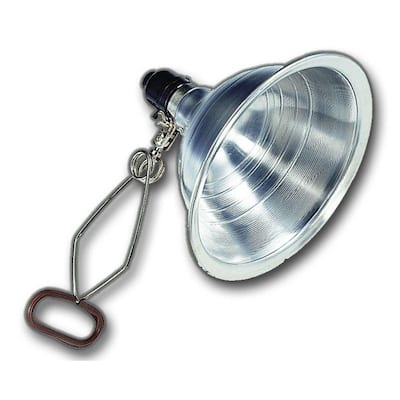
http://www.youtube.com/watch?v=GpcLMyjBWRM
As you can see, that's a 1600 lumen ish bulb above 3 gallons of water. It's a good foot or so off the surface, otherwise it'd burn all the plants. I think deep tanks need more lumens than shallow tanks, and vice versa. If a light is too bright, you can increase its distance off the surface of the water and it stops burning the plant. So the amount of air (and water, especially water) in between the light source and the plant matters, too, not just the lumens of the bulb.
*shrugs* I dunno. When I'm playing around with an $8 light and a $5 bulb, I'm less stressed out about it working or not. Too much light for your 10 gallon tank? It's adjustable, so just tilt it to shine less directly on it. Problem solved. Not enough light for your 40 gallon tank? Buy another, they're $8 per fixture. I got these bulbs in a pack of four bulbs for $10, for full spectrum daylight-imitating compact fluorescents. My friend was telling me that pet store lighting for his 10 gallon tank started at some ridiculous $50 or something and I was like, really? A clamp light is $8. Why not try it first and see if it works?
#16

Posted 16 February 2014 - 01:12 PM
Erica, once again you have created pages of information from the internet. I read the site you referenced. There is no indication that the individual measured any of that output. Those spectral curves are pre-printed advertisement, more propaganda. I'm sorry my LED system works for me, I will try not to tell people. Carry on.
#17
 Guest_Subrosa_*
Guest_Subrosa_*
Posted 16 February 2014 - 05:26 PM
#18
 Guest_Skipjack_*
Guest_Skipjack_*
Posted 16 February 2014 - 06:19 PM
#19
 Guest_Erica Lyons_*
Guest_Erica Lyons_*
Posted 16 February 2014 - 10:35 PM
Those arrived frozen and deadErica you have developed a system which up until now has allowed you to keep any plant you want with a minimal output of energy and money. That is a good achievement. And now you want to keep Pipeworts. Keep us posted.
It's rare to encounter plants that won't grow. Ludwigia peruensis and proserpinaca palustris wouldn't grow. They doubled at first and then slowly withered away and died. But something like two dozen species have grown well. This includes:
myriophyllum aquaticum
ceratophyllum (demersum?)
ludwigia repens
ludwigia ovalis
bacopa monnieri
myriophyllum pinnatum
lysimachia nummularia
echinodorus tenellus
utricularia gibba
nymphaea zenkeri
cladophora, it makes little baby marimo balls. I've got 40 of them bagged up sitting here
podostemum, I kept it for a few weeks to a month to quarantine it before shipping it out and it did fine in holding, no withering
rotala wallichii
hydrocotyle leucocephala
hygrophila difformis
ceratopteris thalictroides
myriophyllum tuberculatum red
giant and medium sized amazon swords, never caught their species names
bolbitis heudelotii
java fern
java moss
Christmas or Singapore moss (not sure)
ricciocarpus natans
lemna gibba
hemianthus callitrichoides
It seems like all the true aquatic plants do all right in my tanks. I don't use CO2 or liquid fertilizer, just the lights I've described and kitty litter substrate. *shrugs* I'm not debating with anyone, just sharing what I do.
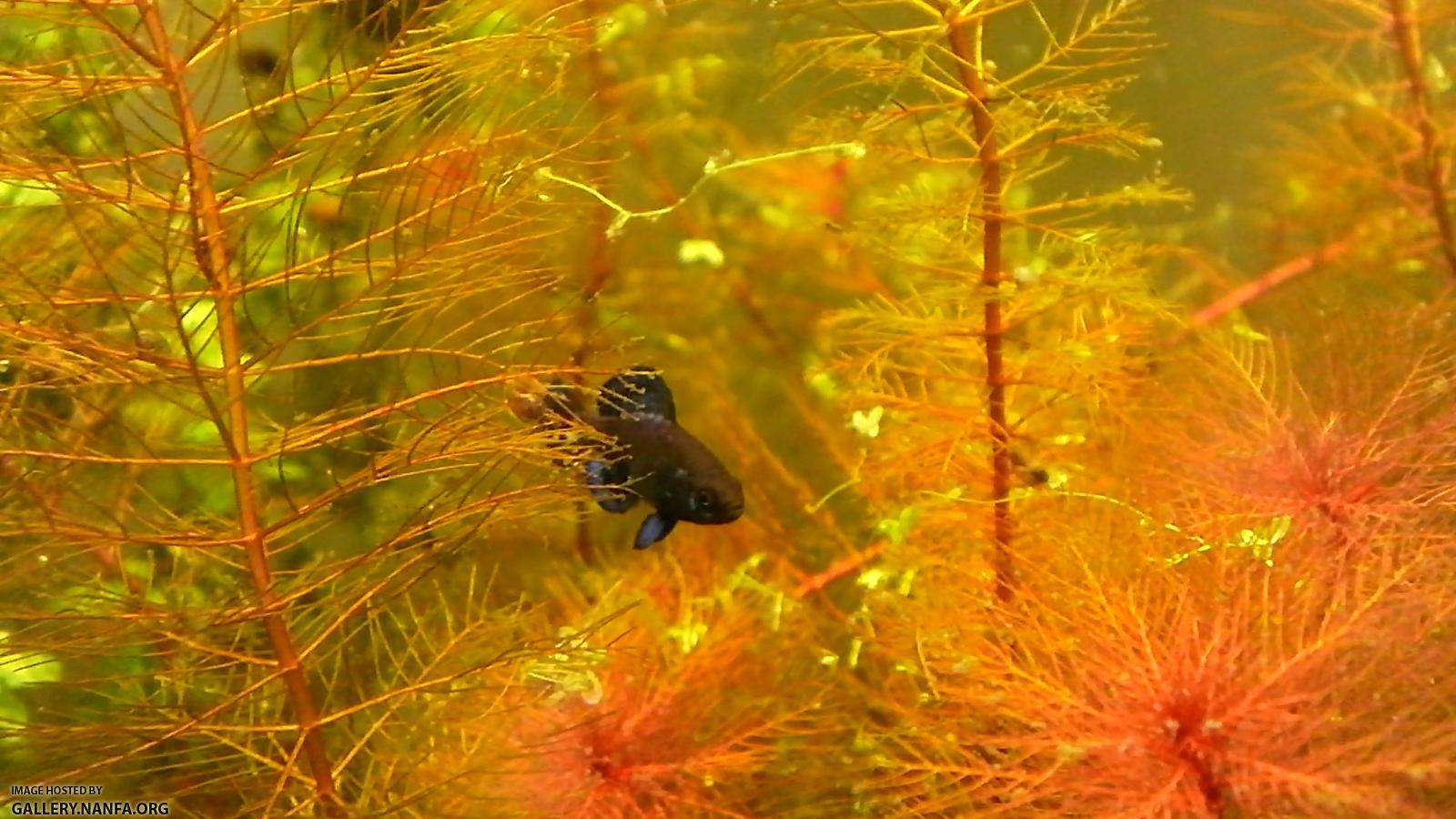

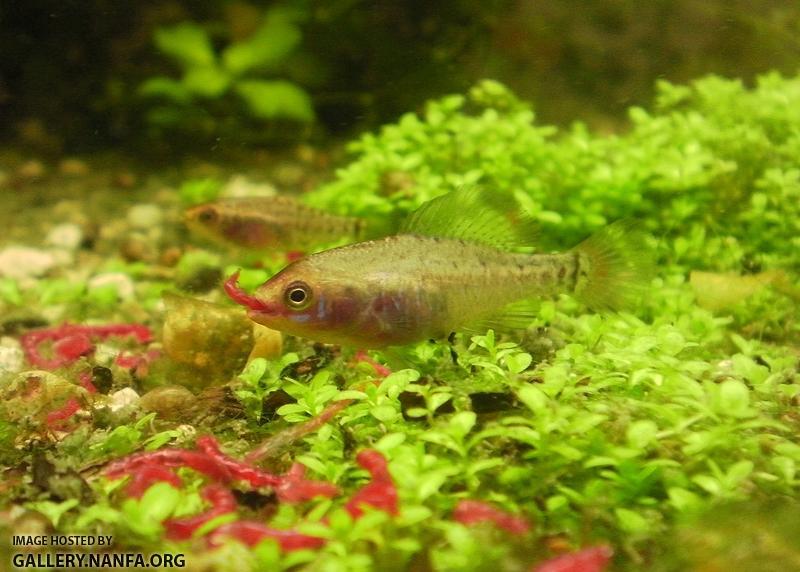
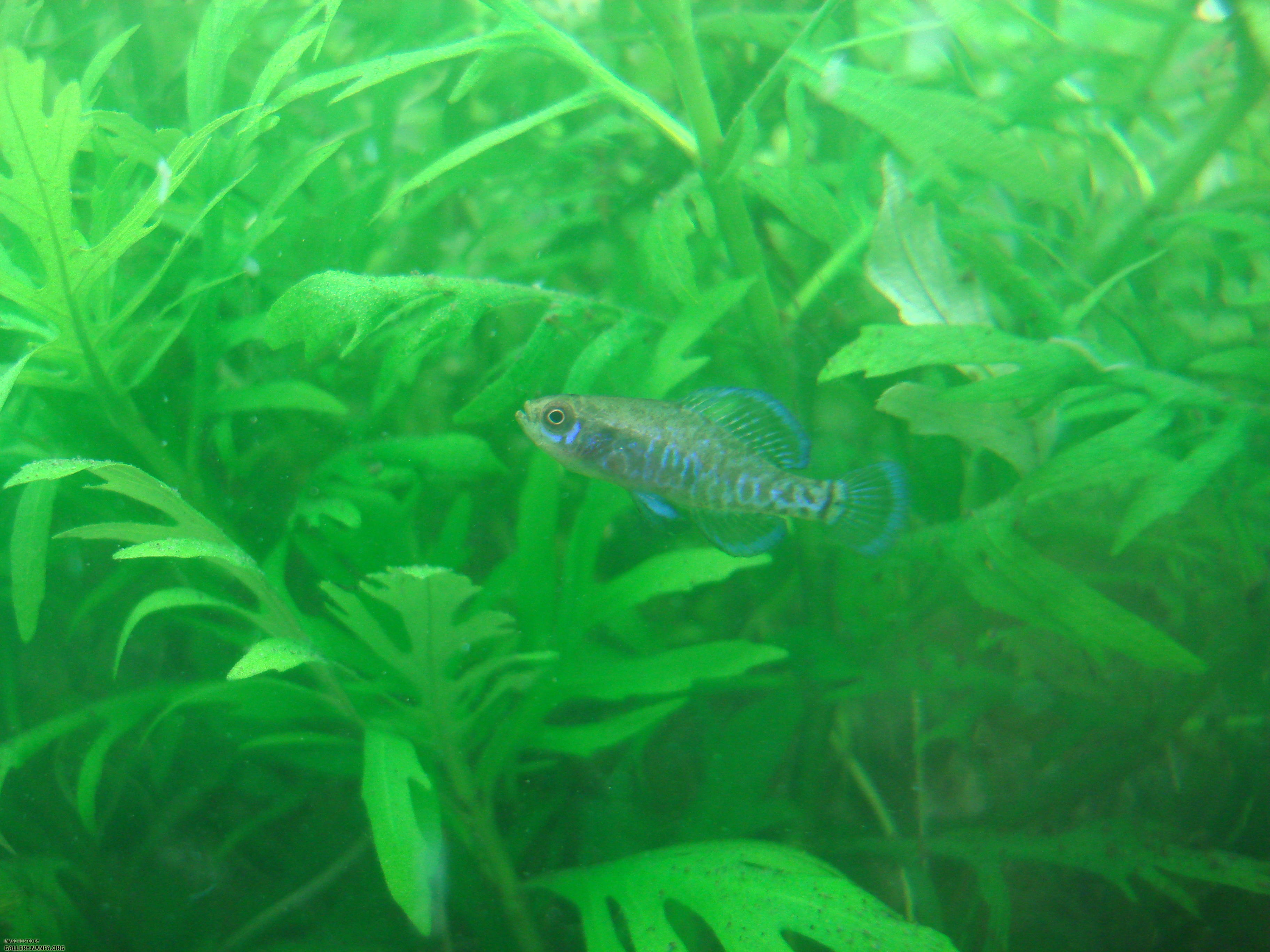
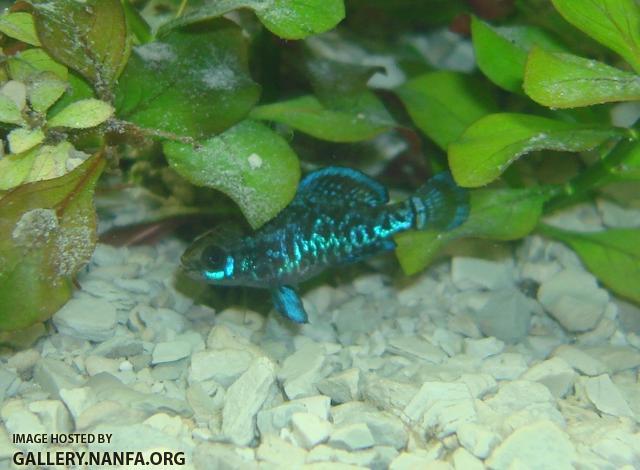
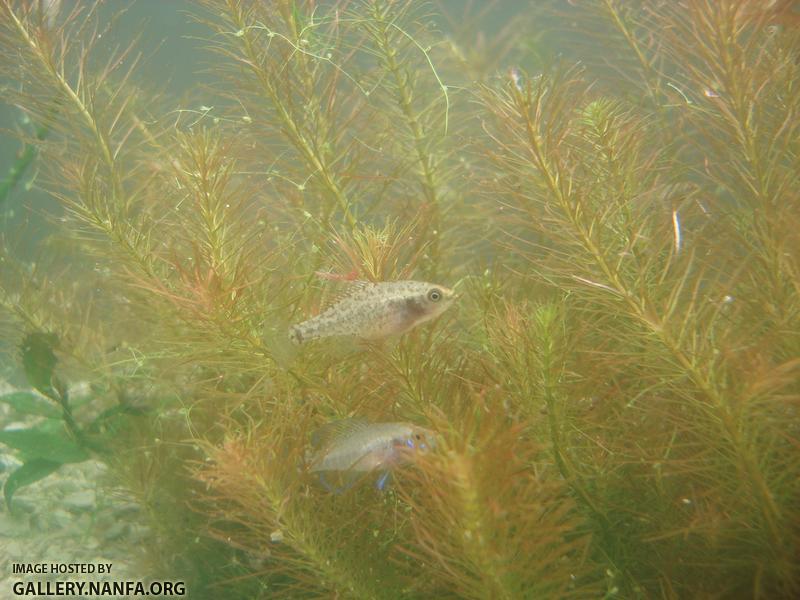

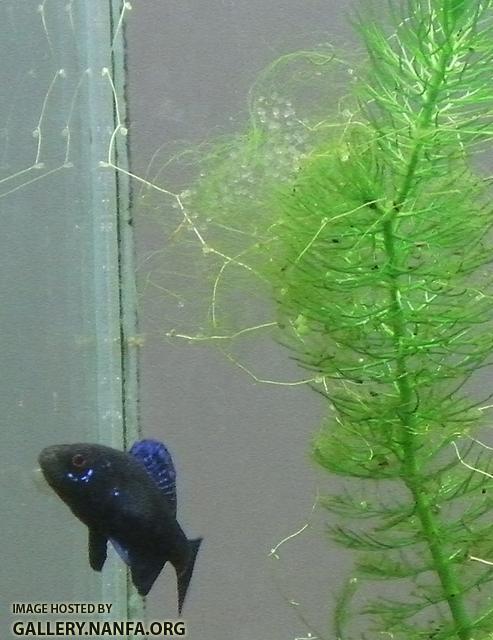
#20
 Guest_Erica Lyons_*
Guest_Erica Lyons_*
Posted 16 February 2014 - 11:06 PM
Steven (rest of name kept anonymous) posted 2 minutes ago on my facebook group:
"lighting for a 8ft tank, low light, I want led that will hang. what are your opnion on these hanging long ways as to make a 8ft strip
http://www.aquatrade...sh-p/56327p.htm"
My response:
"3900 lumens for $63 is overpriced in my opinion because I use 2750 lumen T8 bulbs. Literally, one $20 Lithonia stainless steel T8 shop light from Home Depot with two Daylight Deluxe bulbs (2750 lumens each, full spectrum, $10 for two) can make 5500 lumens and would be brighter than that $60 light."
His response:
" I like the look of LED and this is lower wattage one, wont he T8 murder my powerbill. This will be my show tank and I do want my fish to pop"
My answer:
"It uses 48 watts. A Lithonia T8 fixture uses 64."
His response:
"wait though, do you run 1 fixture, I dont think one would cover my tank though, would the 3900x2 grow my anubia and java well"
Me:
"I run two fixtures to cover my tank so fish can't possibly jump out.
The 3900 lumens x 2 would grow anubias and java well but it's twice the purchase price of the model I suggested and lumen/watt the same efficiency. My Daylight Deluxe 2750 lumens / 32 watt bulbs make 85 lumens/watt.
That LED makes 3900/48=81"
This is every day for me. People just assume they need aquarium-made LEDs to grow plants well, or that the result will somehow be better if they pay twice as much for LEDs. *points upward at pictures of plants* That's not necessarily true. Both LEDs and fluorescent lights work. I don't think one's better than another. I will say one's half the price of another. *shrugs* At least for pre-assembled LED. I've yet to have someone ask about DIY LED. I'd direct them to Michael's thread if they did.
0 user(s) are reading this topic
0 members, 0 guests, 0 anonymous users









